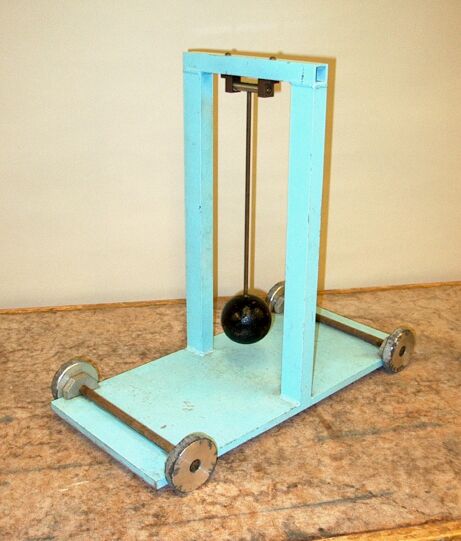
When you raise the pendulum bob to one side and then release it (being careful not to impart any force to the system when you do so), the blue cart oscillates back and forth, in the opposite direction to the oscillation of the pendulum. The center of mass of the whole apparatus remains at rest.
The center of mass of an object is the weighted mean displacement of all of its mass points from some reference point, usually the origin of the coordinate system in which the object sits. This is the sum of the products of all the mass points with their distances from the origin, divided by the total mass of the object (rcm = Σmiri/M). It is usually most convenient to set the center of mass of the object at the origin, but wherever we set it, the center of mass of the system that comprises the cart and pendulum shown in the photograph above, lies along the (vertical) line on which the pendulum sits when it is at rest, roughly even with the bottom of the bob.
Whether a system is in motion or at rest, unless an external force acts upon it, its center of mass must either keep moving as it is or remain at rest. For the cart and pendulum, then, if you set the pendulum in motion without applying a net horizontal force to the system, its center of mass must stay in the same place. If you raise the pendulum bob to either side and release it without exerting any force on the apparatus, the cart and pendulum oscillate in opposite directions, the center of mass of the system remaining at rest. (When you raise the pendulum bob, the center of mass of the system moves toward the bob, but remains where it is when you release the bob.)